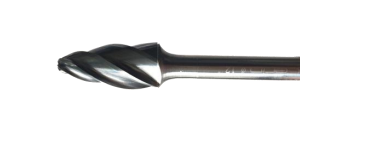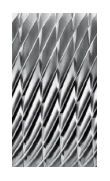1:Carbide rotary file have 2 types
1:Tungsten carbide rotary file--made of high-quality tungsten carbide material, also known as tungsten steel rotary file;
2:high-speed combination gold steel rotary file-made of high-quality high-speed alloy steel material. Usually used with high-speed electric grinder or pneumatic tools.
It can be used for a variety of job requirements, such as processing cast iron, cast steel, carbon steel, alloy steel, stainless steel, hardened steel, copper and aluminum.
2: International general standard shape classification

Generally, the rotary file can be divided into the above 19 shapes, the most commonly used are cylindrical, spherical, flame head shape, etc. In China, the letters A, B, C and other letters directly represent each shape, and the letters ZYA, KUD, RBF are usually used in the world.
Of course, there are also five-tooth shapes specially used in the high-speed rail industry, such as:

3:Blade tooth classification

Generally, single-edged tooth-shaped rotary files are more suitable for processing operations such as soft non-ferrous metals, plastics, soft high-stretch steels or hard woods, while cross-shaped toothed files are more suitable for producing higher cutting performance on hard materials. Grinding of workpieces made of cast iron, cast steel, glass fiber plastic materials
For each shape of the rotary file, the tooth profile of the blade teeth can be selected according to the specific operation requirements. The general international standard tooth profile can refer to the above six types.
What conditions are each tooth profile suitable for?
1:Tooth pattern for aluminum-especially suitable for soft metals such as aluminum alloy, brass, magnesium, etc., because of its wide tooth spacing, it is conducive to rapid removal and cutting.
2:Coarse tooth pattern-soft materials such as bronze, tin, zinc, pure copper and other materials that are easy to process are recommended.
3:Medium tooth pattern/standard tooth pattern-suitable for processing all kinds of steel (including tempered steel), cast steel and almost all metal materials. The surface processing quality of this tooth profile is excellent, and the processing efficiency is relatively high.
4:Diamond tooth profile-this tooth profile is suitable for the processing of high alloy steel, stainless steel, magnesium alloy, gray cast iron and zirconium-nickel steel, and effectively avoids the adverse phenomena caused by the crushing of chips during operation.
5:Close tooth pattern-suitable for finishing operations that require high surface quality such as finishing, especially tempered steel with Rockwell hardness (HRC) below 66.
6:Cross tooth pattern-this tooth profile is suitable for all kinds of metal materials (including tempered steel and corrosion resistant materials), the vibration during processing is small, and it is easy to control and operate
 There is also a chip-breaking tooth pattern, which is selected on the basis of a single-tooth file, which can be used to process materials with longer chips, and can be applied to ①②③⑤file tooth.
There is also a chip-breaking tooth pattern, which is selected on the basis of a single-tooth file, which can be used to process materials with longer chips, and can be applied to ①②③⑤file tooth.
4:Rotary file size selection

The size of the carbide rotary file is mainly based on the head diameter Dc and the shank diameter D2, of which the head blade diameter L2 and the total length L1. It can be selected according to specific job requirements.
Standard type rotary file: The shank diameter (D2) mainly has 3mm, 6mm, 8mm, and 2.35mm is also optional. The length of the handle is a common specification .
Extended shank rotary file: This kind of shank length can be selected according to special working conditions to extend the shank, generally the most commonly used are 75mm, 100mm, 150mm, 300mm. It is very suitable for processing hard-to-reach or deep areas. The longer the handle of the extended handle is not the better, because too long will cause a certain vibration during the grinding operation and affect the work effect.
Miniature rotary file: Therefore, the diameter of the head of this kind of rotary file is small, and the diameter of the shank is generally 3mm. Because of its high degree of concentricity, it is suitable for the trimming of precision work station parts, etc.
5:Rotary file coating
Generally speaking, there is no special requirement, and the rotary file has no coating treatment. Unless special operations require plating. Then the rotary file with coating treatment can mainly extend the service life of the tool, improve the cutting chip removal condition, have better heat resistance and anti-adhesion characteristics, and enhance the cutting force.

